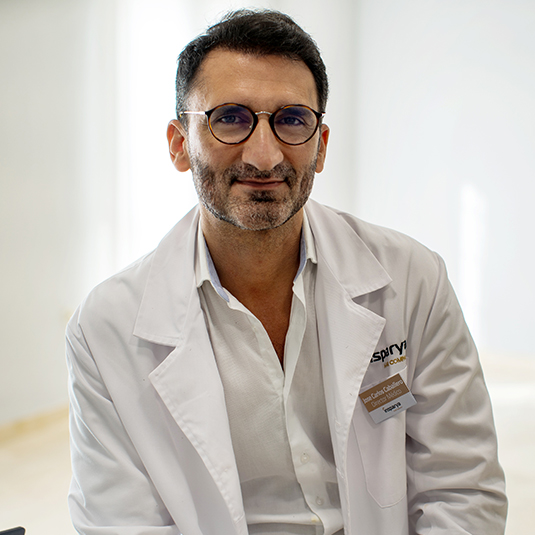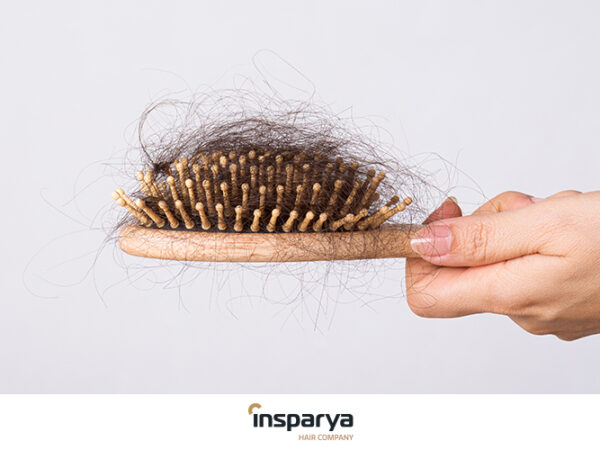
Hipertricosis e hirsutismo: qué es, causas y soluciones
¿Has notado un aumento inusual del vello corporal o facial? La hipertricosis puede ser la razón de esa aparición de pelo excesivo en zonas localizadas o en todo el cuerpo. Es una patología de la que aún no se conocen las causas, aunque puede haber razones hereditarias detrás, o estar asociada a algunos trastornos que es conveniente diagnosticar. Sin duda supone un problema estético importante para quienes la padecen, sobre todo en el caso de las mujeres.
Por suerte, cada vez hay métodos depilatorios más eficaces e indoloros que mejoran de forma muy importante el aspecto de las personas que padecen esta condición. Porque, si bien la hipertricosis no supone en sí un problema de salud, sí puede generar problemas psicológicos a quien la padece.

¿Qué es la hipertricosis o hirsutismo?
La hipertricosis es el crecimiento excesivo del vello, ya sea en cantidad o en grosor, en cualquier parte del cuerpo. Puede darse en una zona localizada o en general en todo el cuerpo. Afecta a hombres y mujeres, aunque no es común, y supone un aumento en la densidad del vello y la transformación del vello en pelo. Es un problema estético y no de salud en sí mismo, aunque algunas enfermedades y síndromes pueden estar asociadas a la hipertricosis, como la porfiria cutánea tarda.
Tipos de hipertricosis
Según la zona de crecimiento del vello la hipertricosis puede ser generalizada, afectando así a todo el cuerpo, o localizada (como el codo piloso o hipertricosis cubital o la lumbosacral). Así, los tipos de hipertricosis principales son las siguientes:
- Congénita terminal. Tiene que ver con el cromosoma X. También se denomina síndrome del hombre lobo.
- Lumbosacral o espinal. El vello crece en la región espinal, por lo que se conoce también como cola de fauno.
- Irritativa o adquirida. Es consecuencia de golpes en la piel, procesos inflamatorios o de someter a una parte del cuerpo a un esfuerzo repetitivo.
- De cejas y pestañas. Supone un crecimiento exagerado del pelo de estas zonas.
- Cervical anterior. Conocida como nuez de Adán, implica una pequeña zona de pelo localizada encima de la nuez.
- Del pabellón auricular. Se presenta sobre todo en ancianos y pacientes diabéticos, a los que crece anormalmente pelo en las orejas e interior de los oídos.
Diferencias entre hirsutismo e hipertricosis
Aunque en ocasiones se usan estos términos de forma indistinta, conviene diferenciarlos. La hipertricosis es una enfermedad rara, en la que el vello excesivo crece en zonas del cuerpo no afectadas por los andrógenos. Aparece independientemente del sexo, raza o edad y es, sin más, un crecimiento fuera de lo habitual.
Por su parte, el hirsutismo se caracteriza por el crecimiento anormal de pelo en zonas que sí dependen de andrógenos. Afecta a mujeres, y el crecimiento de pelo oscuro y grueso sigue patrones típicamente masculinos (labio superior, mentón, pecho, etc.). Se presenta cuando hay trastornos hormonales como el ovario poliquístico (de hecho el SOP es la causa más frecuente de hirsutismo), o tumores de corteza adrenal. Puede vincularse también a la administración de anticonceptivos orales.
¿Qué provoca la hipertricosis? (Causas)
La causa principal se desconoce, aunque el factor genético está detrás de las hipertricosis congénitas. La hipertricosis adquirida generalizada puede ser consecuencia de una porfiria cutánea tardía, de desnutrición (por ejemplo, asociada a anorexia), o de tratamientos farmacológicos como ciclosporina (un inmunosupresor), fenitoína (un anticonvulsivo) o Minoxidil. Infecciones como el VIH, enfermedades cutáneas como la dermatomiositis, así como las anormalidades tiroidea o las alteraciones cerebrales también pueden desencadenarla.
Por su parte, la hipertricosis adquirida localizada puede tener que ver con la fricción de la piel, el sostener una carga mucho tiempo (como les sucede a los costaleros), el uso de aparatos ortopédicos (yesos) y enfermedades como el lupus eritematoso sistémico, la esclerodermia lineal, la dermatitis atópica o el liquen simple crónico.
¿Cómo evitar la hipertricosis?
No hay una forma de evitar la hipertricosis salvo no someterse a tratamientos con medicamentos que puedan provocarlo, y poner siempre en conocimiento del médico cualquier crecimiento excesivo e inusual del vello. Una vez se presenta, la única manera de evitar la evolución de la hipertricosis es eliminar la causa que la ha provocado, así como someterse a técnicas de depilación definitiva, puesto que otros sistemas no acabarán con el vello.
Síntomas de la hipertricosis
El síntoma principal de la hipertricosis es el crecimiento excesivo e inusual de vello en zonas que no son las habituales. Puede aparecer pelo de tres tipos: lanugo (largo, fino y suave, similar al que tienen los recién nacidos y que pierden por sí mismos), vellus (corto, suave y pigmentado, aparece en cualquier parte salvo en mucosas, palmas de las manos y plantas de los pies) y terminal (son los más oscuros, además de gruesos, duros, ásperos y largos). Este último es el que se suele desarrollar en los casos de hirsutismo en mujeres, apareciendo en cara, espalda, brazos y pecho.
Tratamiento para la hipertricosis
El tratamiento debe orientarse siempre a eliminar la causa de la hipertricosis, si bien cuando las causas son genéticas es más complicado encontrar un tratamiento eficaz. Por tanto, es clave el diagnóstico para saber si la causa es medicamentosa, y por tanto hay que cambiar de medicamento, o si es hormonal, y es necesario un tratamiento para recuperar unos niveles hormonales equilibrados.
Hay tratamientos farmacológicos para la hipertricosis, como es la administración tópica de eflornitina, un inhibidor específico del crecimiento del vello. Pero, en la mayoría de los casos, el único tratamiento posible es aquel dirigido a eliminar el vello. La depilación láser, la luz pulsada o la electrólisis son las más recomendables, puesto que evitan que el cabello aparezca de nuevo, como sucede con otros métodos:
- Depilación con cuchilla. La más rápida y común, permite eliminar de forma sencilla el vello de cualquier parte del cuerpo. Si se padece hipertricosis no es la mejor opción, porque el vello volverá a aparecer enseguida, lo que exige un afeitado muy regular, que puede resultar agresivo para la piel.
- Depilación con cera. No es recomendable cuando hay mucho vello, porque resulta un método doloroso. Lo mismo ocurre con la depilación por métodos mecánicos, con aparatología que arranca el vello de raíz. Además, se somete a la piel a un estrés innecesario.
- Depilación eléctrica. Recomendable para hirsutismo localizado, o para finalizar un tratamiento de depilación láser, es una depilación definitiva, aunque no permite eliminar el vello de zonas amplias.
- Depilación por luz pulsada (IPL). La fotodepilación inhibe o debilita el crecimiento del vello, atacando el folículo piloso con pulsaciones de luz. Es rápida, indolora y eficaz para depilar grandes áreas.
- Depilación láser. Es un método de depilación definitiva adecuado para la hipertricosis porque consigue depilar zonas de gran tamaño con rapidez y sin dolor. Resulta muy eficaz para pieles blancas con vello oscuro. Elimina en gran medida el pelo, destruyendo el folículo por fototermólisis selectiva.

Prevención de la hipertricosis
Como mencionábamos antes, no hay una forma eficaz de prevenir la hipertricosis, salvo prestar atención a las alteraciones hormonales, llevar una dieta equilibrada y realizarse revisiones ginecológicas regulares en el caso de contar con un diagnóstico de SOP. Asimismo, evitar medicamentos que incluyan entre sus efectos adversos el crecimiento del vello también es una forma de reducir las posibilidades de desarrollar hipertricosis.
En el caso de detectar una aparición inusual de vello, es recomendable consultar a un médico especialista. Además del examen físico, deberá solicitar un análisis de sangre para conocer si los niveles hormonales son correctos. También pruebas de imagen como ecografías o tomografías, para descartar la presencia de tumores u otros trastornos que puedan estar detrás del crecimiento excesivo de pelo.
En Insparya contamos con un equipo multidisciplinar, compuesto por especialistas en dermatología, medicina general, psiquiatría y medicina correctiva y reconstructiva que te ofrecerán las mejores soluciones para la hipertricosis y el hirsutismo. Contacta ya y fija tu primera cita en alguna de nuestras clínicas.







